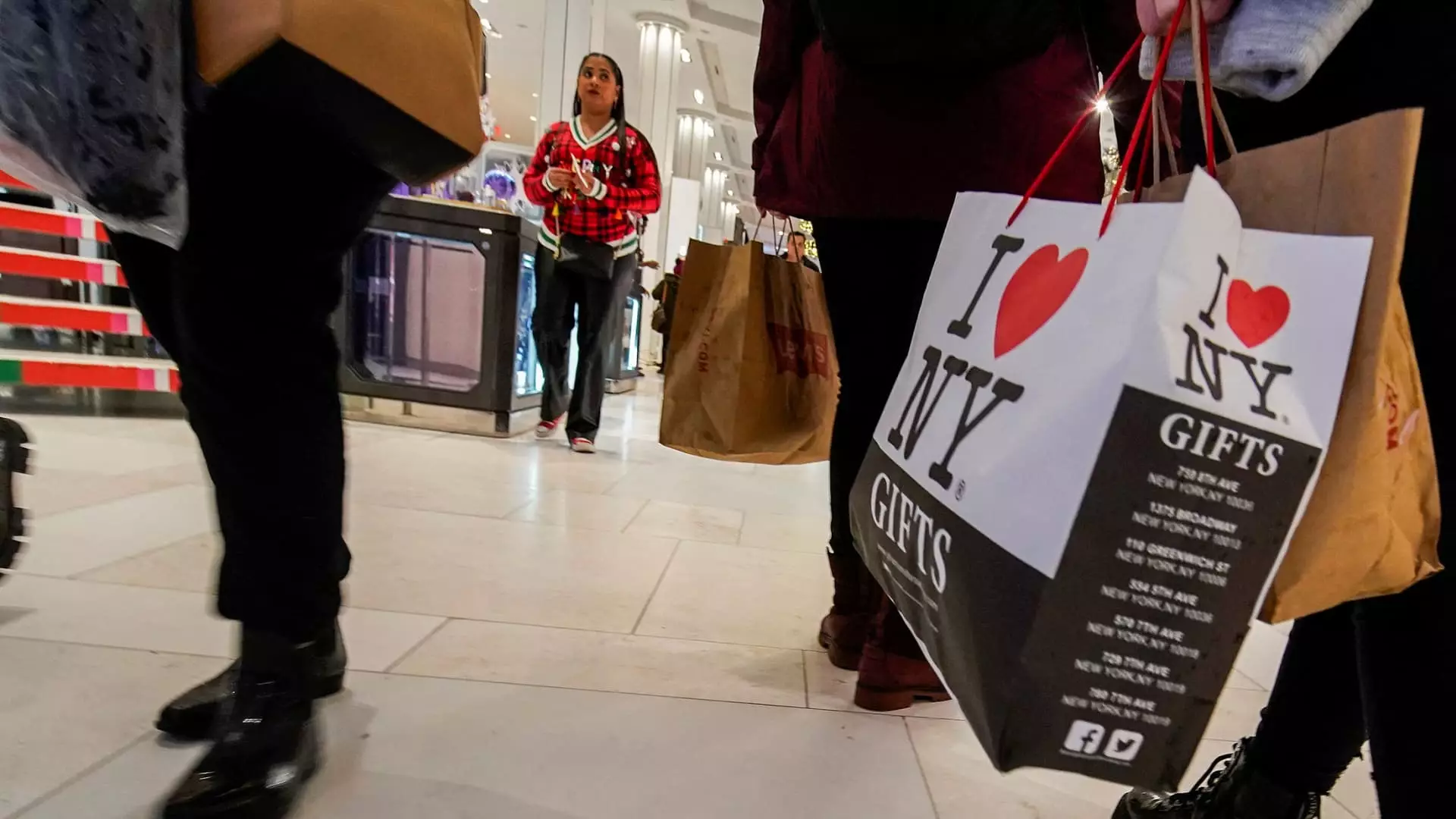As the holiday season approaches, Americans are gearing up for what is projected to be a record-breaking shopping spree. According to the National Retail Federation, estimated holiday spending between November 1 and December 31 is forecasted to reach an astonishing $979.5 billion to $989 billion. This marks an interesting juxtaposition against the backdrop of rising consumer debt. With credit card obligations exceeding $1.14 trillion, many consumers are nonetheless preparing to spend an average of $1,778 this year—an 8% increase compared to previous holiday seasons. These figures illustrate not just a growing appetite for consumerism but also raise questions about financial prudence.
Despite the cheerful outlook on spending, the reality is that many of these holiday shoppers may be engaging in a precarious dance with debt. A report from NerdWallet revealed that approximately 28% of shoppers have yet to clear the financial obligations incurred from last year’s gift-giving. This situation brings to the fore a concerning trend: with 74% of shoppers planning to utilize credit cards, a substantial segment of the population is potentially repeating unwise financial behaviors, fueled by the lure of holiday joy. Meanwhile, alternatives such as savings and buy now, pay later services are becoming increasingly prevalent, with both offering apparent ease of access to immediate gratification without upfront payments.
The rise of buy now, pay later (BNPL) services has emerged as one of the most significant trends in consumer finance. Adobe has predicted a crescendo of BNPL spending, especially on Cyber Monday, which is expected to establish a new daily spending record of $993 million. On the surface, this payment method appears advantageous due to its affordable installment plans and promotional 0% interest offers. However, financial experts caution that these facilities can create a false sense of security that allows consumers to overspend while remaining oblivious to the incurred debt.
Howard Dvorkin, a certified public accountant, likens these BNPL schemes to traditional credit, stating that they are “disguised as something for free.” The challenge is that the more BNPL accounts a consumer opens, the greater the risk of financial mismanagement. The potential consequences—including late fees, deferred interest, and significant penalties—can lead to a financial quagmire that rivals the use of credit cards. Missteps in payment can result in interest rates escalating to a shocking 30%, akin to the more exorbitant credit card charges that consumers strive to avoid.
As we approach the festive season, the conundrum of holiday spending remains evident. While the inclination to give gifts and indulge in holiday cheer is commendable, the underlying financial implications cannot be overlooked. As more consumers engage in borrowing edged by credit cards and BNPL services, a critical reevaluation of financial habits will be necessary. Awareness of the hidden risks involved in these spending tendencies might help mitigate the long-term consequences that come with holiday exuberance. Ultimately, consumers must navigate this season with mindfulness, balancing the joy of giving with the health of their finances.

